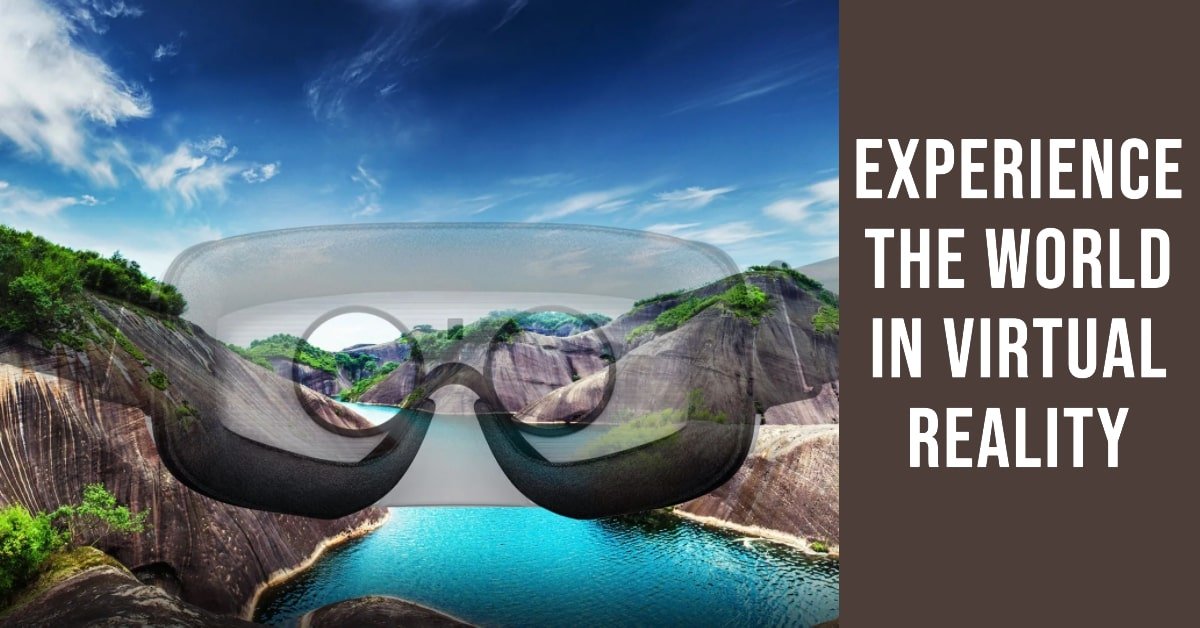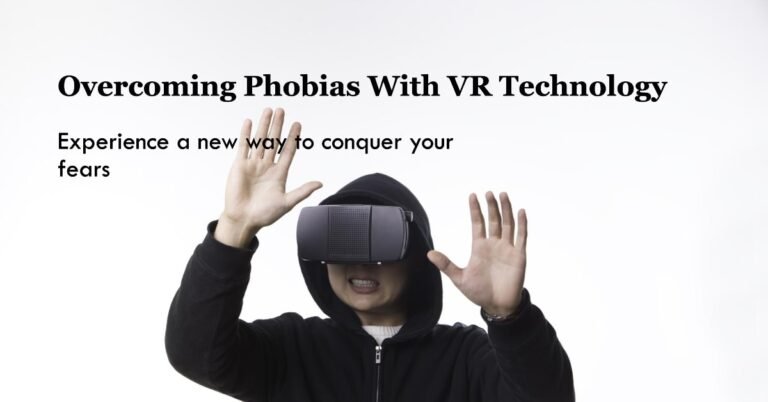VR Travel – Can You Actually TRAVEL the World in Virtual Reality? Here’s the Shocking Truth!
Ever dreamt of scaling the Eiffel Tower or strolling along the Great Wall of China? Virtual Reality (VR) promises to whisk you away on breathtaking adventures from the comfort of your living room. But can VR travel truly replicate the experience of exploring the world in person? Here at ARVRRealm, we’re diving deep into this exciting technology to answer the question: Can you ACTUALLY travel the world in Virtual Reality? Here’s the Shocking Truth!
Hold on tight, travel bugs, because we’re about to uncover the fascinating world of VR travel, its potential to transform tourism, and the limitations you need to consider.
Can You REALLY Travel the World in VR?
Yes, absolutely! VR travel allows you to explore virtual recreations of real-world destinations. Imagine soaring over the pyramids of Giza in a simulated hot air balloon or wandering through a bustling Tokyo market. VR experiences can be incredibly immersive, transporting you to faraway lands with stunning visuals and immersive soundscapes.
Here are some of the amazing things you can do with VR travel:
- Visit iconic landmarks: Stand in awe beneath the Colosseum in Rome or marvel at the Taj Mahal’s intricate details. VR lets you explore these wonders from all angles, feeling closer than ever before.
- Explore diverse cultures: Immerse yourself in the sights and sounds of a bustling Moroccan souk or a peaceful Tibetan monastery. VR travel allows you to experience different cultures without leaving your home.
- Take educational journeys: Dive deep into the Great Barrier Reef or learn about ancient civilizations by virtually walking through historical landmarks. VR offers a unique way to learn and explore.
But is it the Same as Real Travel?
While VR travel offers a glimpse into the world’s wonders, it can’t fully replicate the experience of real-world exploration. Here’s why:
- Limited Sensory Experience: VR primarily focuses on sight and sound, missing out on the full sensory experience of travel. You can’t feel the warmth of the sun on your skin, taste the local cuisine, or smell the fresh air.
- Restricted Movement: While VR allows you to virtually “walk” around, it’s not the same as freely exploring a new place. You’re limited by the boundaries of the VR experience.
- Lack of Social Interaction: Real travel is often about meeting new people and forming connections. VR travel offers a solitary experience, missing out on the social aspects of exploration.
Wonders of VR Travel
So, VR travel isn’t a complete replacement for the real deal, but it offers some incredible benefits:
- Accessibility: Imagine exploring the Galapagos Islands or visiting the International Space Station – VR makes these once-in-a-lifetime experiences accessible to everyone, regardless of physical limitations or budget constraints.
- Planning Tool: Thinking about a trip to Rome? VR tours can help you decide which landmarks to prioritize and get a feel for the layout of the city before you go.
- Educational Advantage: VR can be a powerful educational tool. Imagine exploring the pyramids of Giza and learning about ancient Egyptian civilization in a fully immersive way.
- Combating Fear: Scared of heights? VR exposure therapy can help people gradually confront their fears in a safe, controlled environment.
The Limitations of VR Travel
While VR travel boasts exciting possibilities, it comes with limitations:
- Cost: High-quality VR headsets and travel experiences can be expensive, putting them out of reach for some people.
- Sensory Disconnect: VR primarily focuses on visuals and sounds. You can’t feel the wind on your face, smell the local spices, or taste the regional cuisine – all crucial aspects of experiencing a new place.
- Limited Interaction: Current VR experiences are often passive. While some allow basic movements, you can’t truly interact with the environment or locals like you would in real life.
VR Travel: A Powerful Tool, Not a Replacement
VR travel shouldn’t be seen as a replacement for traditional travel, but rather as a powerful tool that can enhance your travel experience. Here are some ways VR travel can benefit you:
- Pre-Trip Planning: VR tours can help you plan your real-world trip by giving you a virtual taste of different destinations. You can virtually “scout” locations and decide which places to prioritize.
- Educational Tool: VR experiences can be a great way to learn about different cultures and historical sites before you visit them. This can deepen your understanding and appreciation when you travel for real.
- Accessibility for Everyone: VR travel allows people with physical limitations or budget constraints to experience the world in a way that might not be possible otherwise. It opens doors to incredible virtual journeys.
So, How Can You Leverage VR Travel?
Here are some tips to maximize your VR travel experience:
- Combine VR with research: Use VR to explore a destination, then delve deeper with guidebooks, documentaries, and travel blogs to gain a richer understanding of the culture and history.
- Plan your real trip: Use VR tours to identify specific landmarks and experiences you want to prioritize on your physical trip.
- Embrace the limitations: Don’t expect VR to replace the magic of real travel. See it as a tool to enhance your overall travel experience.
- Consider future advancements: VR technology is rapidly evolving. Who knows, maybe one day we’ll be able to smell the Parisian cafes or feel the spray of the Hawaiian waves in VR!
VR Travel App
Virtual Reality (VR) travel apps are a great way to experience different places around the world from the comfort of your couch. These apps allow you to explore landmarks, cities, and even nature in 360 degrees, giving you a feeling of being present in the location.
There are many VR travel apps available, some of the most popular include:
- Google Earth VR: This free app from Google lets you explore the entire world using satellite imagery and 360-degree photos. You can virtually fly over mountains, dive into oceans, and visit famous landmarks.
- National Geographic Explore VR: This app from National Geographic takes you on immersive journeys to some of the most fascinating places on Earth. You can explore rainforests, volcanoes, and even the Great Barrier Reef.
- Wander: This app lets you explore user-created VR experiences from all over the world. You can visit cities, landmarks, and even people’s homes.
- Littlstar: This app focuses on space exploration. You can travel to the planets in our solar system, learn about stars and galaxies, and even experience what it’s like to be launched into space.
VR travel apps can be a great way to learn about new places, plan your next trip, or simply relax and escape to a different world. With the ever-growing library of VR experiences available, there’s sure to be something for everyone. Here are some factors to consider when choosing a VR travel app:
- Content: What kind of content are you interested in? Some VR travel apps focus on specific destinations, while others offer a more general selection of locations.
- Price: How much are you willing to spend? Some VR travel apps are free, while others require a subscription.
- Compatibility: Make sure the VR travel app is compatible with your VR headset.
Here are some additional benefits of using VR travel apps:
- Accessibility: VR travel apps allow you to visit places that you may not be able to afford to travel to in person, or that may be difficult to get to due to physical limitations.
- Education: VR travel apps can be a great way to learn about different cultures and places. You can see and hear things that you would not be able to experience through traditional media.
- Relaxation: VR travel apps can be a great way to relax and de-stress. Immersing yourself in a beautiful natural landscape or a calming environment can help to reduce anxiety and improve your mood.
If you’re looking for a new way to experience the world, VR travel apps are a great option. With a VR headset and a smartphone, you can be transported to anywhere in the world in just a few minutes.
The Future of VR Travel: Exciting Possibilities
The world of VR travel is still in its early stages, but the future holds exciting possibilities. Here’s a glimpse of what’s to come:
- More Immersive Experiences: Advancements in VR technology will create even more realistic and interactive experiences, blurring the lines between virtual and real. Imagine feeling the wind in your hair during a virtual hike or tasting a virtual bite of street food!
- Haptic Technology: Haptic technology, which simulates touch sensations, will further enhance VR travel, allowing you to feel the textures of different environments and objects.
- Social VR Travel: Imagine exploring virtual destinations with friends and family in real-time, sharing the experience and creating lasting memories.
So, Should You Pack Your VR Headset Instead of Your Suitcase?
VR travel is a fantastic way to explore the world from a new perspective, but it shouldn’t replace the joys of real-world travel.
Here’s why packing your VR headset instead of your suitcase wouldn’t be the best travel strategy:
- VR can’t replace the real experience: While VR offers stunning visuals and can transport you to new locations, it can’t replicate the full sensory experience of travel. You can’t feel the warmth of the sun on your skin, taste the local cuisine, or truly connect with the culture in VR.
- Limited interaction: Current VR experiences are often passive. You can’t have real conversations with locals, haggle in a marketplace, or truly explore a destination at your own pace. Physical travel allows for a much more interactive and dynamic experience.
- Missing out on the unexpected: The beauty of travel is often found in the unexpected detours, spontaneous conversations, and hidden gems you discover along the way. VR offers a curated experience, whereas real travel allows for serendipity and adventure.
Think of VR travel as a fantastic appetizer, whetting your appetite for the main course – the real-world travel adventure.
Here’s a better approach:
- Use VR travel experiences to research and plan your trip. Get a feel for a destination’s layout, identify must-see sights, and even overcome travel anxieties through VR exposure therapy.
- Pack your VR headset to use on your trip. Relive cherished travel memories by revisiting your favorite virtual destinations or using VR tours to navigate unfamiliar areas.
VR travel is a powerful tool that can enhance your overall travel experience, but it shouldn’t replace the irreplaceable magic of physical exploration. So, pack your suitcase, grab your sense of adventure, and get ready to experience the world in all its glory!
FAQs
What kind of VR experiences are available for travel?
There’s a growing range of VR travel experiences available, including:
360° travel videos: These immersive videos transport you to various destinations, allowing you to virtually explore landmarks, cityscapes, and natural wonders.
Interactive VR tours: These tours offer more than just visuals. You might be able to navigate through a virtual environment, learn about specific locations through narration or on-screen information, and even interact with some elements.
VR documentaries: Immerse yourself in the culture and history of a place with VR documentaries that take you on a guided journey through a destination.
Where can I find VR travel experiences?
You can find VR travel experiences through several channels:
VR platforms: Popular VR platforms like SteamVR, Oculus Rift Store, and PlayStation VR offer a variety of travel experiences.
Travel websites and apps: Many travel companies are starting to incorporate VR experiences into their offerings.
Museums and cultural institutions: Some museums and cultural institutions are using VR to allow people to virtually explore their exhibits and collections.
What do I need to experience VR travel?
To experience VR travel, you’ll need a VR headset and a compatible device (computer, smartphone, etc.). The specific requirements will vary depending on the VR experience you choose.
Is VR travel for everyone?
VR travel can be a great experience for many people, but it’s not for everyone. Some people may experience nausea or dizziness while using VR headsets. It’s important to listen to your body and take breaks when needed. Additionally, VR might not be suitable for people with certain medical conditions.
What are the ethical considerations of VR travel?
As VR travel continues to develop, there are some ethical considerations to keep in mind. These include ensuring responsible portrayal of cultures and environments and making VR travel experiences accessible to everyone.
Final Thoughts: It’s All About Balance
VR travel offers a unique window into the world, but it’s just one piece of the travel puzzle. The most fulfilling travel experiences combine the power of VR with the irreplaceable magic of physical exploration. So, pack your virtual bags, then get ready to book your real-world adventure!






